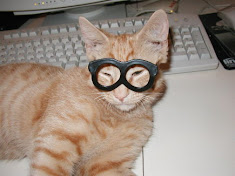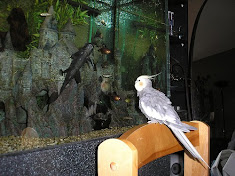One factor that makes the leopard gecko so popular with individuals interested in the world of lizards may be the considerable amount of exclusive and vibrant hues available to the consumer. Through decades of procreation, fantastic and exotic shades and patterns have been developed, creating a wonderful assortment of leopard gecko morphs throughout the years.
 |
| Leopard Gecko by Amy Loves Yah |
Breeders have carefully bred these morphs together developing several variations. These wonderful animals all have such exclusive looks and markings it really is easy to understand why the leopard gecko is considered one of the most majestic types of lizard in captivity.
This breed of lizard originally started in the Middle East - Afghanistan, India, and Pakistan area. Adult geckos can develop to become lengths of 8 to 12 inches long and weigh 60 to over 100 grams in captivity. The baby leopards are around three inches and average 3 grams in weight. These lizards are a terrestrial animal which signifies they prefer to live from the ground.
They are also nocturnal creatures, meaning that they're most active at night. With proper care from their owners they can easily survive up to 20 or more years. In order for you to keep them happy and healthy, leopard gecko owners have to provide their lizards with a number of important things.
These geckos shed their skin regularly. Because of this they require a humid environment that assists in them becoming able to properly shed their skin. Owners can help their lizards by providing a humid hide box. A humid hide box is fundamentally a hide box with damp sphagnum moss. This aids the leopard gecko within in the shedding process.
The leopard also requires a healthful diet plan. They store the additional weight inside their tails. This gives them a source of nutrition whenever there is a shortage. A leopard gecko which has a fat tail is really a healthy gecko.
They should also be supplied with a light and a heat source. It is essential to offer a hot and cold temperature gradient for the animal. A temperature gradient is basically having a warm end along with a cooler end of the enclosure, which will permit your pet to regulate its personal internal system and warmth.
Much like many other reptiles these geckos are prospective carriers of infectious diseases like salmonella. Owners must continually wash both hands before and following dealing with their leopard gecko and/or the environment and the material in it, to aid in the prevention of potentially passing on one of these illnesses.
As time goes on leopard geckos are gaining in popularity and will continue to be a singular example of probably the most favorite kept reptiles in the home. As their recognition grows, breeders will continue to breed more exclusive and fascinating morphs.
About the Author
Felix Silva is a leopard gecko enthusiast. He spends much of his time teaching others on how to properly care for their leopard geckos. If you would like to get some more leopard gecko information, please visit our site at http://www.leopardgeckoplanet.com and sign up for our free mini-course.



0 comments:
Post a Comment